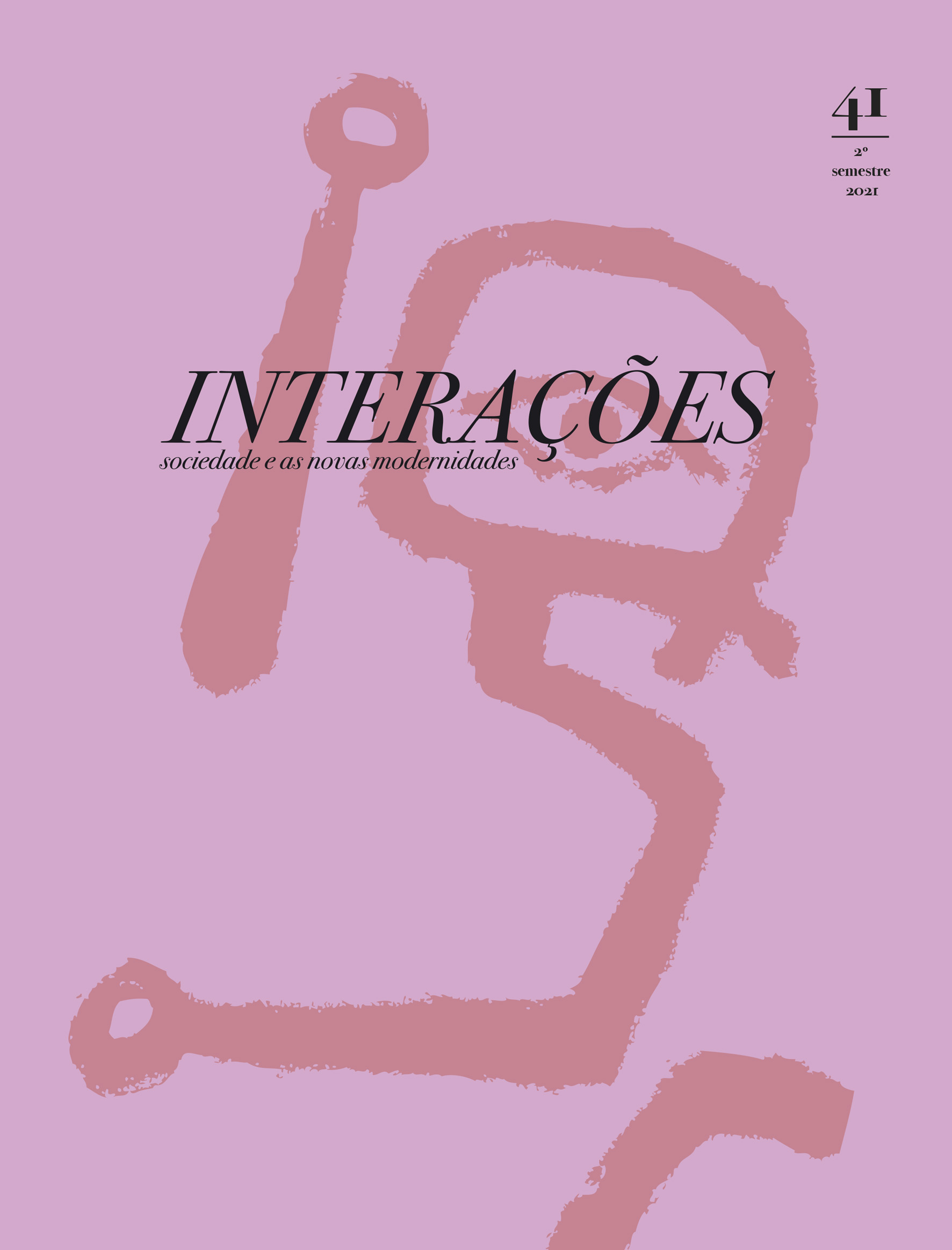White Fang Ally: The Arctic As Eden of Death in 30 Days of Night
DOI:
https://doi.org/10.31211/interacoes.n41.2021.a1Keywords:
30 Days of Night, Vampire, Gothic, Horror, HeterotopiaAbstract
A recurrent congenital weakness of 20th and 21st century television, literature, and cinema vampires is their porphyric susceptibility to ultraviolet radiation. Central to vampires' continued undead life is the problem of sunlight. In this way, sunless environs like the Arctic and Antarctic represent what I describe as purely Gothic environments in whose desolation, cold, and darkness, undead life is able to proliferate, unmarred and unimpeded by the typical diurnal/nocturnal cycles of luminosity that trouble the undead lives of vampires. In order to theorize the value of the Arctic as an embodiment of Gothic-horror, this essay uses Steve Niles and Ben Templesmith’s 30 Days of Night (2002) as a case study of the pathetic resonances between the Arctic and the figure of the vampire. Following on from this, the analysis turns to Michel Foucault’s concept of the heterotopia in order to theorize the manner in which the Arctic, whose nocturnal/diurnal rhythms stand in radical opposition to the majority of seasonal cycles elsewhere on earth, represents an onto-existential paradise of death for the undead: a chronotope that embodies the essential attributes of the onto-existential condition of the undead.
Downloads
References
Barker, C. (2002). Cold blood [Introdution]. In S. Niles, & B. Templesmith, 30 Days of Night. IDW Publishing.
Bloom, C. (2010). Gothic Histories: The Taste for Terror, 1764 to Present. Continuum International Publishing Group.
Cohen, J. J. (1996). ‘‘Monster Culture: Seven Theses. In Jeffrey Jerome Cohen (Ed.), Monster Theory: Reading Culture (pp. 3–25). University of Minnesota Press.
De Vore, D., Domenic, A., Kwan, A., & Reidy, N. (n.d). The Gothic Novel. [Webarchive]. https://web.archive.org/web/20110413003858/http://cai.ucdavis.edu:80/waters-sites/gothicnovel/155breport.html. Accessed 2 Sept. 2018.
Estok, S. C. (2011). Ecocriticism and Shakespeare: Reading Ecophobia. Palgrave Macmillan.
Foucault, M. (1984). Of Other Spaces: Utopias and Heterotopias (Jay Miskowiec, Trans.). Architecture /Mouvement/Continuité (Octobre).
Hicks, M. P. (2018). The Horror Book Review Digest, Vol 1. High Fever Books. Hillard, T. J. (2009). ‘Deep Into That Darkness Peering’: An Essay on Gothic Nature.
Interdisciplinary Studies in Literature and Environment, 16(4), 685-695.
Hillard, T. J. (2013). From Salem Witch to Blair Witch: The Puritan Influence on American Gothic Nature. In Andrew Smith & William Hughes (Eds.), EcoGothic, (pp. 103-119). Manchester University Press.
Khair, T. (2009). The Gothic, Postcolonialism and Otherness: Ghosts from Elsewhere. Basingstoke: Palgrave.
Koenig-Woodyard, C. (2018). The Mathematics of Monstrosity : Vampire Demography in Richard Matheson’s I Am Legend. University of Toronto Quarterly, 87(1), 81- 109.
Mackenzie, L., & S. Posthumus. (2013). “Reading Latour Outside: A Response to the Estok-Robisch Controversy.” Interdisciplinary Studies in Literature and Environment, 20(4), 757-777.
Matheson, R. (1995). I Am Legend. Tom Doherty. (Original work published 1954).
Merola, N, M. (2014). ‘For terror of the deadness beyond’: Arctic Environments and Inhuman Ecologies in Michelle Paver’s Dark Matter.” Ecozon@, 5(2), 22-40.
Morton, T. (2010). “The Dark Ecology of Elegy.” In Karen Weisman (Ed.), The Oxford Handbook of Elegy, (pp. 251-271). Oxford University Press.
Niles, S., & Templesmith, B. (2002). 30 Days of Night. IDW Publishing.
Philips, D. (2003). The Truth of Ecology: Nature, Culture, and Literature in America. Oxford University Press.
Shelley, M. W. (1823). Frankenstein: Or, the modern Prometheus, (2 vols, 2nd ed.). G. and W. B. Whittaker.
Smith, B. (2017). Environmental Dangers in the Tundra. Sciencing, https://sciencing. com/environmental-dangers-tundra-23668.html. Accessed 2 Sept. 2018.
Taylor, M. A. (2012). “The Nature of Fear: Edgar Allen Poe and Posthuman Ecology.” American Literature, 84(2), 353-379.
Thacker, E. (2011). In the Dust of This Planet: Horror of Philosophy, Vol. 1. ZeroBooks.
Trexler, A. (2012). Novel Climes: Anthropocene Histories, Hans-Jörg Rheinberger’s Trace, and Clive Cussler’s Arctic Drift. The Oxford Literary Review, 34(2), pp. 295–314.
Trexler, A., & Johns-Putra, A. (2011). Climate Change in Literature and Literary Criticism. Wiley Interdisciplinary Reviews: Climate Change [Online], pp. 185- 200. http://onlinelibrary.wiley.com/doi/10.1002/wcc.105/abstract
Veland, S., & A. H. Lynch. (2016). Arctic ice edge narratives: scale, discourse and ontological security. Area, 49(1), 9-17.
Downloads
Published
How to Cite
Issue
Section
License
Copyright (c) 2021 Kwasu David Tembo

This work is licensed under a Creative Commons Attribution-NonCommercial 4.0 International License.
The copyright of published works is retained by the author who grants Interações the original publication right. The published article can be used freely for educational, non-commercial purposes, in accordance with the Creative Commons License - Attribution-Non-Commercial 4.0 International, provided that the author, the title of the article, the title and number of the journal are cited together with the URL or DOI of the article.



